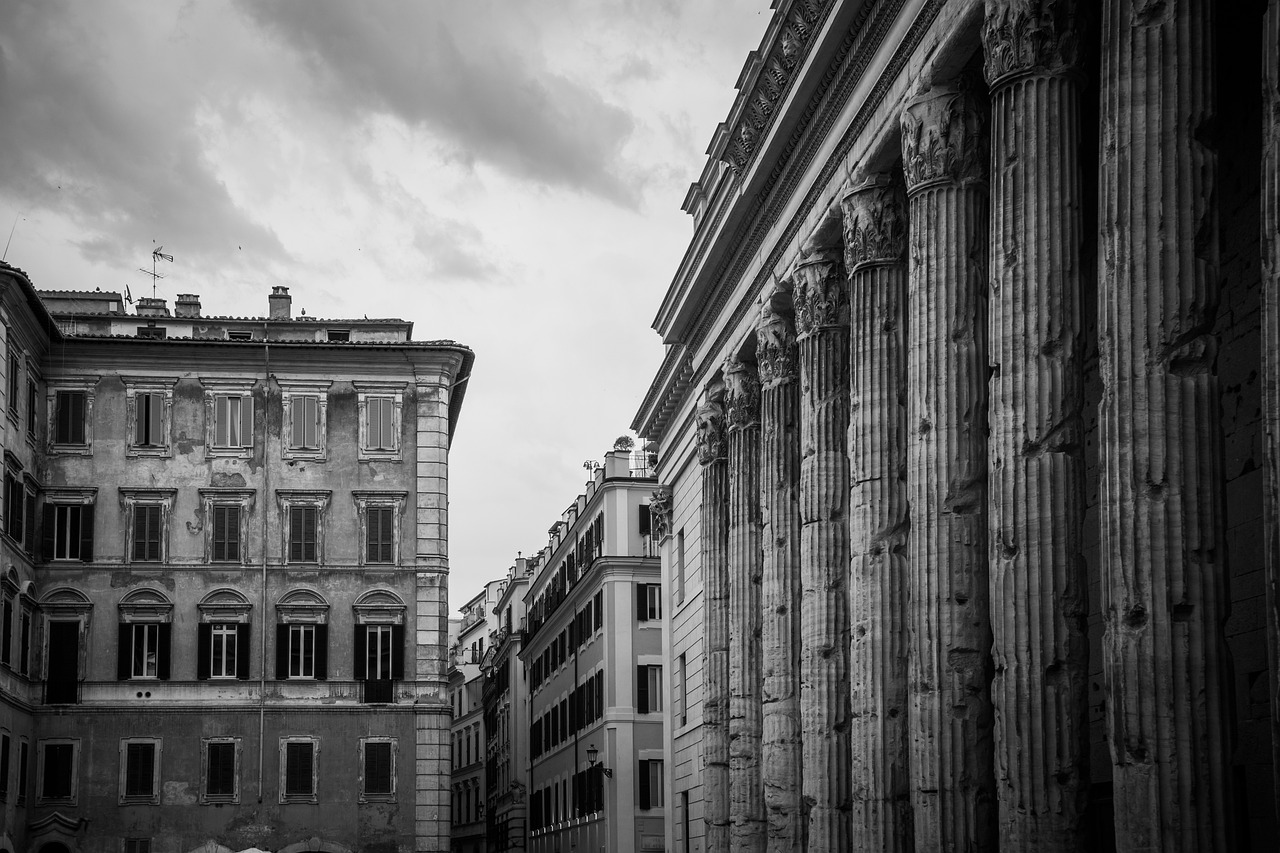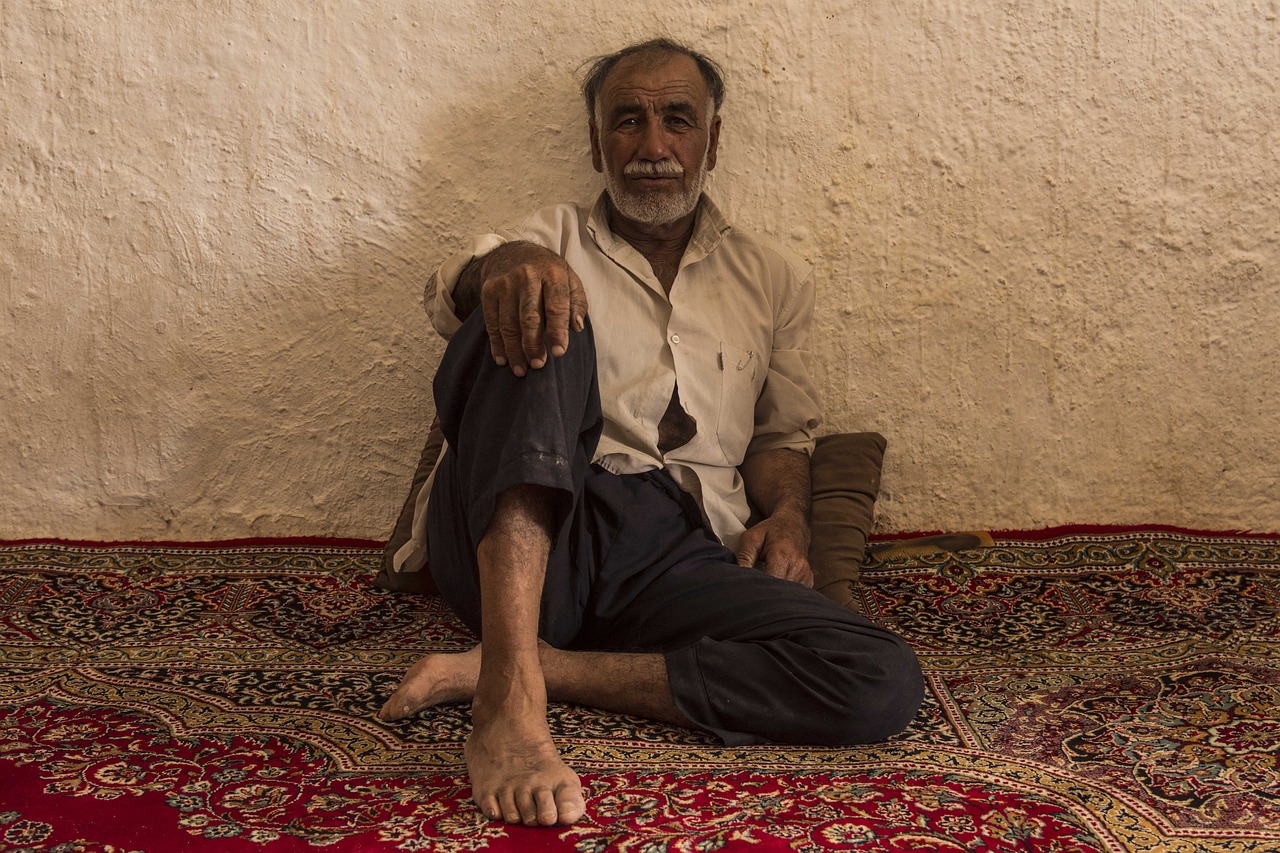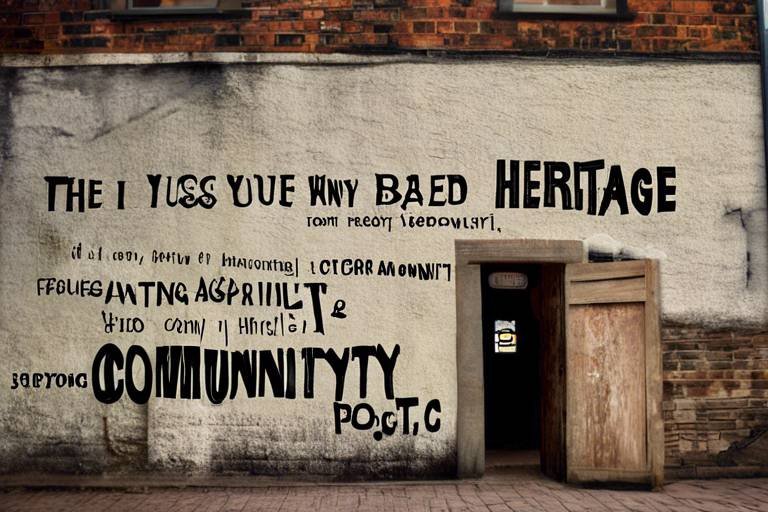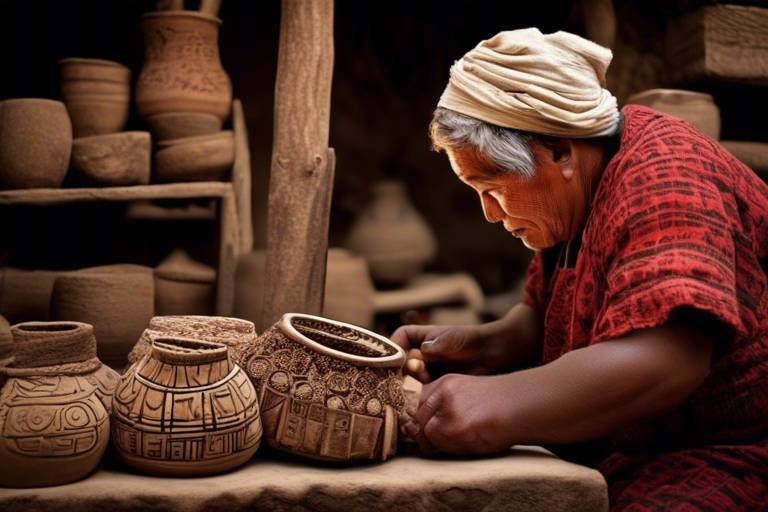The Legacy of Ancient Persian Empires
The legacy of ancient Persian empires stands as a testament to the enduring influence of a civilization that shaped the course of history. From the majestic Achaemenid Empire to the flourishing Sassanian Empire, Persia's impact on culture, art, governance, and architecture reverberates through the ages.
The Achaemenid Empire, under the visionary leadership of Cyrus the Great, Darius the Great, and Xerxes, rose to power with a blend of military prowess and administrative genius. Their reign marked a period of expansion and innovation that laid the foundation for future empires to follow.
On the other hand, the Sassanian Empire ushered in a golden age of Persian civilization, characterized by artistic achievements, literary excellence, and religious tolerance. Despite facing conflicts with the Byzantine Empire, Persia thrived as a center of culture and learning.
One of the most enduring legacies of ancient Persia lies in its architectural marvels, with grand palaces like Persepolis showcasing the ingenuity and grandeur of Persian design. The intricate carvings and innovative engineering feats continue to inspire awe and admiration to this day.
Zoroastrianism, the ancient Persian religion founded by Zoroaster, played a significant role in shaping the moral values, rituals, and worldview of the empire. Its influence extended beyond religious practices, permeating all aspects of Persian society.
Furthermore, the Persian Empire's pivotal role in the Silk Road trade network facilitated cultural exchange, economic prosperity, and the dissemination of ideas and technologies across vast distances. The legacy of Persian trade and influence reverberates through the annals of history.
The literary contributions of ancient Persia are equally remarkable, with epic tales like the Shahnameh and the mystical poetry of Rumi capturing the imagination of generations. These works continue to resonate with readers worldwide, showcasing the timeless power of Persian storytelling.
The concept of Persian gardens, designed as earthly paradises blending nature, water features, and geometric patterns, reflects the Persians' deep connection to the natural world. These serene and harmonious spaces embody the Persian ideal of beauty and tranquility.
Today, the legacy of ancient Persian empires lives on in modern Iran, influencing art, language, traditions, and the collective memory of a storied past. The echoes of Persia's rich history can be seen in every corner of the country, a testament to the enduring impact of a civilization that shaped the course of human civilization.

Achaemenid Empire: Rise and Expansion
The Achaemenid Empire, one of the most significant ancient Persian empires, emerged under the leadership of Cyrus the Great in the 6th century BC. Known for its vast territorial expansion, the empire encompassed diverse regions, from Anatolia to Egypt, setting the stage for a new era of governance and cultural exchange. Cyrus the Great, revered for his benevolent rule and respect for local traditions, laid the foundation for the empire's administration, promoting tolerance and diversity among its subjects.
Under the reign of Darius the Great, the Achaemenid Empire reached its zenith, with administrative innovations such as the establishment of satrapies, or provinces, and the construction of the Royal Road to facilitate communication and trade. Darius's ambitious building projects, including the magnificent city of Persepolis, showcased the empire's wealth and power, symbolizing its grandeur and sophistication.
Xerxes, the son of Darius, continued the empire's expansion efforts, notably launching military campaigns against Greece. The famous Battle of Thermopylae and the naval engagement at Salamis highlighted the Achaemenid Empire's military prowess and strategic ambitions. Despite facing setbacks in Greece, the empire's influence persisted through its cultural achievements and diplomatic relations with neighboring states.

Sassanian Empire: Golden Age of Persia
The Sassanian Empire, often regarded as the Golden Age of Persia, marked a period of significant cultural and artistic achievements in ancient history. Established in 224 CE by Ardashir I, the Sassanian Empire thrived for over four centuries, showcasing remarkable advancements in various fields.
One of the most notable aspects of the Sassanian Empire was its flourishing art scene. The empire produced intricate silverware, vibrant textiles, and exquisite metalwork that reflected the sophistication and creativity of Sassanian artisans. These artistic expressions not only adorned the empire's palaces and temples but also influenced neighboring regions and future artistic movements.
Moreover, the Sassanian Empire was known for its promotion of religious tolerance, particularly towards Christianity and Judaism. This inclusive approach contributed to a diverse and harmonious society, fostering intellectual exchange and cultural growth within the empire.
At the same time, the Sassanian Empire engaged in fierce conflicts with the Byzantine Empire, leading to a series of wars that shaped the geopolitics of the region. These military confrontations highlighted the strategic prowess and military might of the Sassanian rulers, such as Khosrow I and Khosrow II, who expanded the empire's territorial reach and influence.
Additionally, the Sassanian Empire made significant contributions to the development of urban planning and architecture. Cities like Ctesiphon and Bishapur boasted grand structures, including palaces, fortifications, and elaborate gardens, showcasing the empire's architectural ingenuity and aesthetic sensibilities.
Overall, the Sassanian Empire's Golden Age left a lasting legacy on Persian history, influencing subsequent dynasties and leaving a profound impact on the cultural landscape of the Middle East.

Persian Architecture: Palaces and Persepolis
Exploring the rich history and lasting impact of the ancient Persian empires on culture, art, governance, and architecture, from the Achaemenid Empire to the Sassanian Empire.
Discover the origins and expansion of the Achaemenid Empire, including the reign of Cyrus the Great, Darius the Great, and Xerxes, and their influence on future empires.
Uncover the flourishing period of the Sassanian Empire, known for its advancements in art, literature, and religious tolerance, as well as its conflicts with the Byzantine Empire.
Explore the architectural marvels of ancient Persia, including the grand palaces of Persepolis, intricate carvings, and innovative engineering feats that still inspire awe today.
Delve into the beliefs and practices of Zoroastrianism, the ancient Persian religion founded by Zoroaster, influencing moral values, rituals, and concepts of good and evil.
Trace the significant role of the Persian Empire in the Silk Road trade network, facilitating cultural exchange, economic growth, and the spread of goods, ideas, and technologies.
Appreciate the literary contributions of ancient Persia, from epic poems like the Shahnameh to the mystical verses of Rumi, showcasing the enduring legacy of Persian storytelling.
Examine the concept of Persian gardens as symbols of paradise on earth, blending nature, water features, and geometric design to create tranquil and harmonious spaces.
Reflect on how the legacy of ancient Persian empires endures in modern Iran, influencing art, language, traditions, and the collective memory of a storied past.
The Persian architecture of ancient times stands as a testament to the grandeur and innovation of the empire. Palaces and structures like Persepolis showcase the mastery of Persian architects in creating awe-inspiring edifices that have stood the test of time.
Persepolis, the ceremonial capital of the Achaemenid Empire, is a prime example of Persian architectural excellence. The grandeur of its columns, the intricate carvings depicting historical events, and the sheer scale of the complex leave visitors in awe of the ancient craftsmanship.
One remarkable aspect of Persian architecture is the use of innovative engineering feats. The construction of massive structures like the Apadana Palace at Persepolis, with its intricate details and imposing presence, demonstrates the advanced skills of Persian builders in creating monumental works of art and architecture.
Moreover, Persian palaces were not merely structures of stone and mortar but representations of power and splendor. The layout of these palaces, with their courtyards, audience halls, and residential quarters, reflected the hierarchical structure of Persian society and the opulence of the ruling class.
Through the architectural wonders of palaces and Persepolis, the ancient Persians left a lasting legacy that continues to inspire admiration and fascination in the modern world.
Stay tuned for the FAQ section!

Zoroastrianism: Religion of Ancient Persians
Exploring the rich history and lasting impact of the ancient Persian empires on culture, art, governance, and architecture, from the Achaemenid Empire to the Sassanian Empire.
Discover the origins and expansion of the Achaemenid Empire, including the reign of Cyrus the Great, Darius the Great, and Xerxes, and their influence on future empires.
Uncover the flourishing period of the Sassanian Empire, known for its advancements in art, literature, and religious tolerance, as well as its conflicts with the Byzantine Empire.
Explore the architectural marvels of ancient Persia, including the grand palaces of Persepolis, intricate carvings, and innovative engineering feats that still inspire awe today.
Delve into the beliefs and practices of Zoroastrianism, the ancient Persian religion founded by Zoroaster, influencing moral values, rituals, and concepts of good and evil.
Trace the significant role of the Persian Empire in the Silk Road trade network, facilitating cultural exchange, economic growth, and the spread of goods, ideas, and technologies.
Appreciate the literary contributions of ancient Persia, from epic poems like the Shahnameh to the mystical verses of Rumi, showcasing the enduring legacy of Persian storytelling.
Examine the concept of Persian gardens as symbols of paradise on earth, blending nature, water features, and geometric design to create tranquil and harmonious spaces.
Reflect on how the legacy of ancient Persian empires endures in modern Iran, influencing art, language, traditions, and the collective memory of a storied past.
Zoroastrianism, the religion of ancient Persians, holds a unique place in history with its focus on dualistic cosmology. The belief in Ahura Mazda as the supreme god of goodness and Angra Mainyu as the embodiment of evil shapes the moral compass of followers. Fire, as a symbol of purity, plays a central role in Zoroastrian rituals and ceremonies, symbolizing the eternal light of Ahura Mazda. Zoroastrianism's emphasis on the eternal battle between good and evil, and the ultimate triumph of good, has influenced various religions and philosophies throughout history.

Silk Road: Persian Trade and Influence
The Silk Road played a pivotal role in connecting the East and the West, with the Persian Empire serving as a vital hub along this ancient trade route. Traversing vast stretches of land and crossing diverse terrains, the Silk Road facilitated the exchange of goods, ideas, and technologies between different civilizations. Persian merchants and caravans not only transported silk, spices, and precious metals but also carried cultural influences that shaped the development of societies along the route.
Through their active participation in trade, the Persians not only accumulated wealth but also fostered cultural exchange and diplomatic relations with neighboring empires. The Silk Road allowed for the spread of Persian art, textiles, and craftsmanship to distant lands, influencing the artistic styles and techniques of regions as far as China and Europe. This cultural diffusion not only enriched the Persian Empire but also contributed to the diversity and interconnectedness of the ancient world.
Moreover, the Persian Empire's control over key trade routes enabled them to exert significant influence over the economic dynamics of the ancient world. By establishing trade agreements, ensuring safe passage for merchants, and promoting a stable currency system, the Persians facilitated commerce and prosperity along the Silk Road. This economic prosperity, in turn, fueled the growth of cities, the development of infrastructure, and the flourishing of arts and sciences within the empire.

Persian Literature: Epic Tales and Poetry
When it comes to Persian literature, one cannot help but be captivated by the epic tales and mesmerizing poetry that have stood the test of time. The richness of Persian literary tradition is evident in the masterpieces that have been passed down through generations, captivating readers with their vivid imagery and profound themes.
One of the most renowned works of Persian literature is the Shahnameh, an epic poem written by the poet Ferdowsi. This monumental work chronicles the mythical and historical past of Iran, filled with heroic tales of kings, warriors, and mythical creatures. The Shahnameh not only serves as a literary masterpiece but also as a cultural touchstone that celebrates the Persian identity.
Another prominent figure in Persian literature is Rumi, a 13th-century poet whose mystical verses have inspired readers around the world. Rumi's poetry delves into themes of love, spirituality, and the human experience, offering profound insights that resonate with audiences across cultures and time periods.
Throughout history, Persian poets and writers have used the power of words to convey complex emotions, philosophical ideas, and cultural values. The beauty of Persian poetry lies in its ability to transcend language barriers and connect with readers on a profound level, evoking deep emotions and contemplation.
From the intricate rhymes of ghazals to the enchanting narratives of masnavis, Persian literature continues to enchant and inspire readers worldwide. The enduring legacy of epic tales and poetry from ancient Persia serves as a testament to the enduring power of storytelling and the timeless beauty of the written word.

Persian Gardens: Paradise on Earth
Persian gardens are often hailed as paradises on earth, embodying the perfect blend of nature and human ingenuity. These meticulously designed gardens serve as tranquil retreats, offering a harmonious oasis amidst the bustling world. Inspired by the concept of paradise in Persian literature and religious beliefs, Persian gardens feature lush greenery, vibrant flowers, and serene water elements that symbolize life, fertility, and eternity.
The layout of Persian gardens is carefully planned to create a sense of balance and symmetry, with geometric patterns and precise alignments that reflect the order and harmony of the universe. Central to these gardens are water channels, fountains, and pools, symbolizing the eternal flow of life and the importance of water in sustaining all living beings. The sound of flowing water and the sight of reflecting pools contribute to the soothing ambiance of these idyllic spaces.
One of the most famous Persian gardens is the Bagh-e Fin in Kashan, Iran, known for its exquisite design and historical significance. This UNESCO World Heritage Site showcases the quintessential elements of Persian garden design, with cypress trees, fragrant roses, and shaded pathways that invite contemplation and relaxation. Visitors to these gardens can experience a sense of connection with nature and a glimpse into the artistic and philosophical traditions of ancient Persia.
Throughout history, Persian gardens have influenced garden design in various cultures, from the Moorish gardens of Alhambra in Spain to the Mughal gardens of India. The concept of creating a paradise on earth through harmonious garden spaces continues to inspire landscape architects and garden enthusiasts worldwide, highlighting the enduring legacy of Persian culture and aesthetics.

Legacy of Persian Empires Today
The legacy of the ancient Persian empires continues to resonate in modern Iran, shaping various aspects of society and culture. From art and architecture to language and traditions, the influence of these historical empires can be seen in numerous facets of daily life. Persian art, known for its intricate designs and vibrant colors, still inspires contemporary artists and designers, reflecting a deep-rooted connection to the past.
One of the most enduring legacies of the Persian empires is the Persian language itself. Farsi, the modern descendant of Old Persian, serves as the official language of Iran and is spoken by millions around the world. The rich literary tradition of Persian poetry and prose, dating back to ancient times, continues to captivate readers with its beauty and depth.
Moreover, Persian traditions and customs, such as Nowruz (the Persian New Year) and Chaharshanbe Suri (Fire Festival), are celebrated with enthusiasm and pride, preserving a link to the past while embracing the present. These cultural practices not only connect Iranians to their heritage but also serve as a source of unity and identity in a rapidly changing world.
Additionally, the architectural marvels of ancient Persia, such as Persepolis and Pasargadae, stand as testaments to the ingenuity and skill of the Persian builders. These awe-inspiring structures attract visitors from around the globe, offering a glimpse into the grandeur and sophistication of a bygone era.
Frequently Asked Questions
- What were the major achievements of the Achaemenid Empire?
The Achaemenid Empire, under rulers like Cyrus the Great and Darius the Great, established the first world empire known for its efficient governance, construction projects like the Royal Road, and promotion of human rights and religious tolerance.
- How did Zoroastrianism influence ancient Persian society?
Zoroastrianism, the dominant religion of ancient Persia, shaped moral values, rituals, and concepts of good and evil, emphasizing the eternal battle between light and darkness, leading to a strong sense of ethical responsibility among its followers.
- What role did Persian literature play in shaping cultural identity?
Persian literature, with epic poems like the Shahnameh and the mystical verses of poets like Rumi, not only entertained but also served as a means of preserving history, promoting moral values, and fostering a sense of national pride and identity.
- How did Persian gardens reflect the values of ancient Persian society?
Persian gardens, designed as earthly paradises with elements like water features, geometric layouts, and lush greenery, symbolized harmony with nature, tranquility, and the Persian belief in creating beauty and order in the world.



















